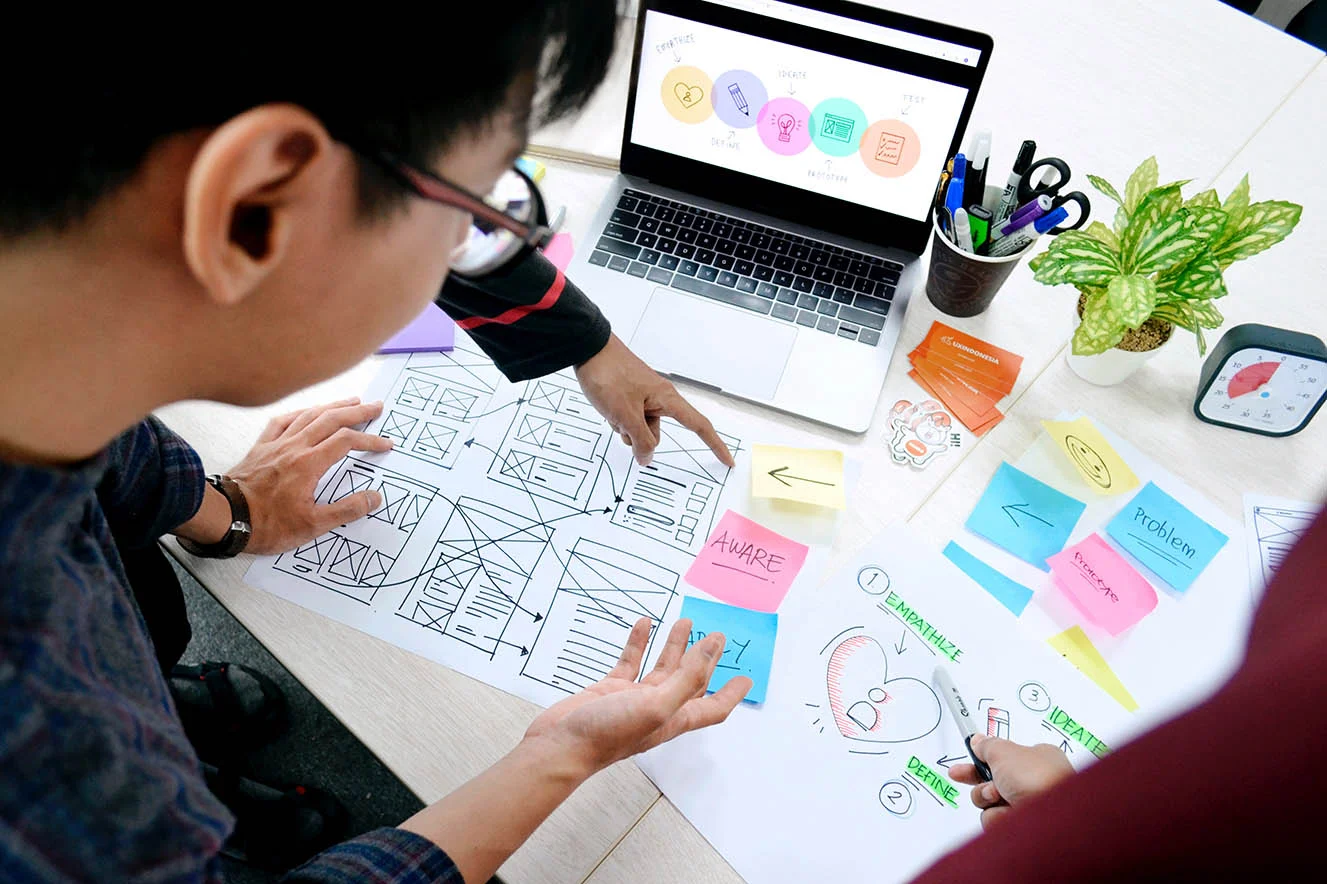The Benefits of Design Thinking in the Workplace


The modern workplace has changed and new market dynamics are forcing businesses to think differently. As a result, people with the ability to demonstrate design thinking, innovation, and creativity in the workplace are in-demand. Workforces are on the lookout for people who can use their creative energy to come up with innovative solutions and boost productivity.
What is design thinking?


Design thinking is a mindset that fosters creative thinking and problem-solving. Design at its core is the conceptualisation and creation of new things. Anyone who is following its principles can imagine and make solutions that improve our lives.
When people use design thinking, they follow a process of inspiration, ideation, and experimentation in order to solve problems. They become inspired by connecting with people and understanding their needs, then they use expansive and divergent thinking to generate a variety of ideas as to how they can approach the challenge at hand, before experimenting with prototypes.
Design thinking encourages people to be empathetic and take informed action. The process helps people to think creatively and make their ideas tangible in an interactive way.
Why is design thinking important?
Design thinking encourages people to be creative and to look at problems from a fresh perspective. As the saying goes, you can’t have something new in life without doing something different. The approach can help people solve some of society’s biggest challenges.
As the world becomes more interconnected, we need human-centred approaches to improve the systems that connect us all. How can we face the challenges of a largely globalised world without design thinking? The importance of creativity in the workplace is clear when you think about how quickly things can change in the new world.
What are the benefits of design thinking in business?


Businesses have faced unique challenges in recent years. High inflation, supply chain shortages, and pandemic-related lockdowns put many businesses in new territory. Many businesses also digitalised and expanded their online presence while imagining new business models and finding new ways to engage with their customers.
Working from home also caused many people to look at their job through a new lens. Employees started asking for values-driven work and greater flexibility, sparking ‘the great resignation’.
Businesses have needed to reimagine the employee experience, meet rising customer expectations, enhance operations, and learn how to operate transparently – all at once.
That’s why innovation and creativity in the workplace have become more important than ever before. Business leaders can’t draw upon the same strategies to solve new challenges. So, they are turning to the expansiveness of design thinking to come up with new ideas, create new strategies, drive meaningful change, and foster a sense of purpose.
Design thinking can help businesses to redefine their value, adapt to shifting markets and consumer behaviours, re-invent business models, address problems in society, and spark cultural transformation.
It achieves this by putting people’s unmet needs at the centre of decision-making. Just like a creative graphic or interior designer trying to create more sustainable products, design thinkers will identify a problem, gather inspiration, and generate novel ideas to solve it. Then they build prototypes to bring their ideas to life quickly, testing and learning until they find the best solution.
How to foster innovation and creativity in the workplace.


Practice empathy
Designers are able to empathise with other people and understand their needs. Rather than assuming they know what someone else thinks or feels, they will observe them closely and ask questions.
Think about how a graphic designer would approach their work. When they receive a brief from a client, they will ask a lot of questions to get a clear vision of the impact that the client wants to make on the world. They will ask their client to describe what they are envisioning or provide inspirational images that resonate with them. They will do their best to understand the needs, wants, pains, and gains of the target audience.
The designer might then create three different design prototypes to be sent back to the client for their feedback. Each prototype will offer a unique approach to the brief. Then, it’s up to the client to select their favourite option to move forward. The graphic designer would give the client the space and safety to provide incremental feedback as they bring the vision to life together.
Imagine if the graphic designer didn’t take the time to understand the target market’s perspective. The work wouldn’t connect on an emotional level and create the desired outcome.
So, think about it. How could you use empathy in your own role and connect with your customers or employees more deeply?
Get to the root of problems
Albert Einstein believed that defining a problem correctly is the key to finding a good solution. He famously said, ‘If I were given one hour to save the planet, I would spend 59 minutes defining the problem and one minute resolving it.’
This is especially important in business, where we can be faced with complex problems that don’t always have concrete rules or algorithms to define them. For example, a poor-performing company culture or declining market performance are just the surface-level indicators of other deeply rooted problems.
Design thinkers understand the difference between problem-defining and problem-solving (and they don’t dive straight into the latter). They take the time to understand the real problem at the heart of many moving parts.
Create a culture of learning
If organisations want to be more innovative and creative, people have to be safe to share their ideas. It’s important that there is a diverse workforce and that people are encouraged to communicate and collaborate with each other. This can help to facilitate a culture of perspective-taking and seeking which can ignite creativity.
Creativity is the ability to come up with new ideas. Every human has this capacity and the more ideas we are exposed to, the more creative we can be. In a culture of learning, employees are encouraged to experiment, take risks, and share their insights.
The design thinker keeps their mind open to these learnings so that they can view problems from a variety of angles and come up with novel solutions.
Mastering the Design Thinking Process
Creativity, problem-solving, and design thinking are three skills that workplaces need in abundance today. If you want to boost your understanding of design thinking, start trying to solve problems in a creative way and remember to follow these three steps: get inspired, generate ideas, and experiment.
You could also start learning a design-driven discipline. APC has a variety of nationally recognised design courses that you can explore to boost your creativity. Graphic Designer, Interior Designers, and UX Designers have the hard and soft skills required to solve many of the challenges that businesses are facing today.





